#Patlabor on Television
Photo



194 notes
·
View notes
Text
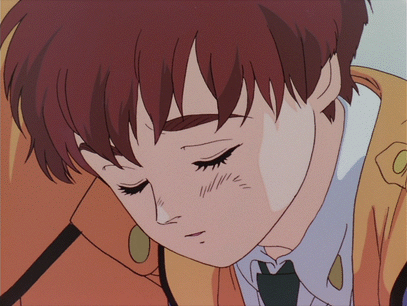
#Kidou Keisatsu Patlabor#Patlabor: The Mobile Police#Patlabor on Television#Patlabor#Izumi Noa#Anime#gif
49 notes
·
View notes
Text


when women look at each other like this, it means they are in love
115 notes
·
View notes
Text

Noa Izumi and Badrinath Harchand official art
#patlabor#noa izumi#badrinath harchand#bud renard#bud renard harchand#patlabor on television#mobile police patlabor
4 notes
·
View notes
Text
Patlabor The Mobile Police: On Television
(1989-1990)
#retro anime#old anime#classic anime#90s anime#mecha#mech#mecha art#patlabor#noa izumi#anime 80s#80s anime#80s#80s aesthetic#機動警察パトレイバー ON TELEVISION#機動警察パトレイバ
186 notes
·
View notes
Text
Welcome to the Wanderer's Rest
Hi there! If you've stumbled on this blog, then stay for a bit. Read along as I ramble about the stories of old, whether that be video games, movies, anime, anime movies, anime games, or really anything. There's a lot of stuff in the world, and I'd like to talk about the things that I love, maybe the things that I also don't like. Just don't expect me to write out some rage bait though. We don't do that here. Or try to not do that. Text is hard when it comes to conveying emotions...

That's why God invented gifs. So have this gif of a confused Noa Izumi.
2 notes
·
View notes
Photo

One of the few Labor Showroom Ladies from Episode 31 of Patlabor ON TELEVISION.
209 notes
·
View notes
Text

Artwork for Patlabor On Television anime TV series, commissioned for the Animage Bunko book "Mobile Police Patlabor: My Alphonse", Tokuma Shoten, June 1990. Robot artwork by Yoshinori Sayama, character artwork by Akemi Takada. Scanned from my personal collection.
#patlabor#パトレイバー#animage magazine#アニメージュ#animage bunko#アニメージュ文庫#am juju#yoshinori sayama#佐山善則#akemi takada#高田明美#artwork#anime#アニメ#1990
35 notes
·
View notes
Text
My top 3 Animators
Here’s a detailed research of these animators:
1.
Pendleton Ward
Ward Taylor Pendleton Johnston, known professionally as Pendleton Ward, or simply Pen Ward, is the creator of Adventure Time and the original Animated short, as well as a production designer for Steven Universe. Pendleton Ward currently works for Cartoon Network Studios and Frederator Studios. He was born on September 23, 1982, and grew up in San Antonio, Texas.
In 2002/2003, Pendleton Ward published a webcomic titled Bueno the Bear. He later took down the comics because he thought they were "terrible."[3] However, he retains the name "buenothebear" for his website and his handle on sites like Twitter. Later, Pen created a short for Frederator Studios titled "Barrista" starring Bueno the Bear.
Pen continued to work on short animations for Frederator's Random! Cartoons which aired on Nicktoons. There, he worked with several people who later join him on the Adventure Time series, including composer Casey James Basichis, Adam Muto and Niki Yang. His two shorts were "The Bravest Warriors" and the "Adventure Time" animated short. The "Adventure Time" short was made in 2006 and went on to become an internet phenomenon in 2007, with over 1,000,000 views by November of that year.[4] (Internet searches seem to indicate it first went viral in mid-January 2007, although the original versions of the video on YouTube have since been removed.) Pen pitched Adventure Time as a full series in 2006 or 2007 to Nickelodeon, however, they passed it up for Fanboy & Chum Chum, a CGI animated Television series. It took some time until Cartoon Network decided to pick up the show, which, some fans believe, was better then the show being in the hands of Nickelodeon.
In 2008, Pendleton Ward worked on Cartoon Network's The Marvelous Misadventures of Flapjack (along with JG Quintel, creator of Regular Show) as a writer and storyboard artist. Flapjack was a storyboard-driven show, meaning that the storyboard artists also wrote the episodes, based on an outline. The experience inspired Pen to run Adventure Time the same way, once it was picked up as a series.
Pen became interested in animation at an early age, inspired by his mother, Bettie Ward, who was an artist and worked with animators. He started drawing flipbooks in first grade.
At the Adventure Time panel at San Diego Comic-Con 2011, Matt Groening, creator of The Simpsons and Futurama, made a surprise appearance, telling a story about Pendleton's childhood. His mother brought him to visit his house to get advice on how to be an animator. However, he couldn't remember what advice he had given to him.
Pen attended CalArts, where he became friends with JG Quintel. (They later worked on Flapjack together, and in 2009, Quintel went on to create Regular Show). At a "Producers Show" at CalArts, Pen met Eric Homer from Frederator Studios, which was his first lead in working with Frederator.
2.
Jonathan Djob Nkondo
He was born in Paris in 1987 and grew up in the suburbs, drawing loads since he was a kid. He was really inspired by cartoons like Dragon Ball Z, Mighty Max, Patlabor, Inspector Gadget, Ulysses 31, the Warner Bros ones and video games like Zelda, TMNT and Mario Bros.
But at some point, his parents decided they wanted him and his siblings to watch less TV, so they got rid of it. There was not much to do and entertain himself with, which led him to start reading a lot of books and comics.
He used to go to the library a lot and copy/draw over those drawings, trying to understand the techniques behind them. He was more curious about characters in general, and one day he just decided to create his own, along with his own stories for them.
But yeah, he read a lot of comics — and very diverse ones. Loads of Belgian ones: the famous ones like TinTin, Spirou, Les 4 As (The 4 Aces), Bone… A lot of mangas as well and, later on, during college, he found out about the American comics like Spider Man, Xmen, Gen 13, Witchblade, Spawn, etc.
He is a big fan of Katsuhiro Otomo. Akira is the first manga heread when he was a kid. He was too young at the time to fully understand the story behind it, but his style blew his mind. He just recently bought the 6 volume set (like 2 years ago) and he’s still impressed by the drawings.
But the story and message have now became more important to him. He thinks the three most impactful mangas he read when he was kid were Akira, Gunnm from Yukito Kishiro and Gon from Masashi Tanaka.
On the “dreamy” comment: well, a lot of my ideas are actually coming from dreams I have.
It’s definitely happened that I dreamt about something and then illustrated it afterwards. I tend to be very conscious when I’m dreaming (sort of lucid dreaming), and I think it’s a good source of inspiration. Often times I feel stuck with an idea or get a hint of a path that could be interesting to develop, so I usually keep that in mind and I kind of unlock those during my sleep.
3.
Yoneyama Mai
Mai worked at TRIGGER, an anime production company that is highly regarded both in Japan and abroad. There, she was in charge of the animation director for “Kill la Kill” and the character design for “Kiznaiver” and other aspects of the works, and she emerged as a force to be reckoned with. In the 2019 Japanese massive hit animated film “PROMARE”, having played a central role in visual development and other aspects of the work, she has a definite presence in the animation and illustration industry.
Mai has also been remarkably active as an illustrator, such as working on the main visual for the EVANGELION fashion brand “RADIO EVA”. And she held a solo exhibition “SHE” in 2019 and a solo exhibition “EGO” in 2021, her activities as an artist gain momentum.
Her works are characterised by the depiction that you can feel the flow of emotions and movements, which is the result of the fusion of a broad and deep sensibility that includes not only Japanese but also Asian elements, and an expressive ability to convey situations backed by the outstanding skills of an outstanding animator.
“For me, drawing animation is an act that reminds me of the preciousness of the moment. I like the state that is created by extending the moment of a single frame, preparing many of them, and establishing a flow of movement by moving them back and forth, so that all the moments are interacting with each other, so I made it into my work.”
1 note
·
View note
Photo






32 notes
·
View notes
Text
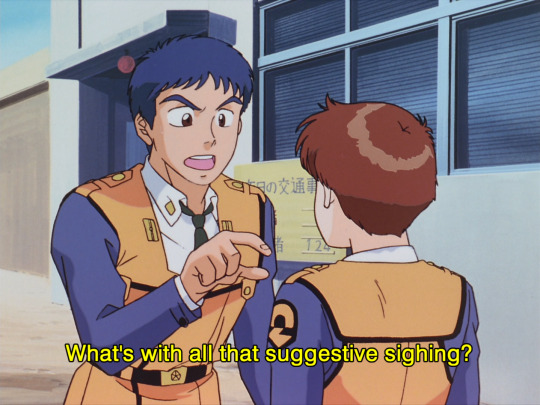
#Kidou Keisatsu Patlabor#Patlabor: The Mobile Police#Patlabor on Television#Patlabor#Izumi Noa#Shinohara Asuma#Anime#screenshot
57 notes
·
View notes
Text




Noa...
35 notes
·
View notes
Photo

Patlabor: The TV Series (1989)
102 notes
·
View notes
Text
Patlabor The Mobile Police: On Television
(1989-1990)
150 notes
·
View notes
Text
G Gundam Prelude: The Real Robot vs Super Robot Debate

So before I begin talking about Mobile Fighter G Gundam, I'd like to take a minute to preface that conversation with a companion piece of sorts. This involves the nature of how the mecha "genre" of anime is divided into two subgenres, and how this subdivision (*synth and bass solo play at the same time*) is often used as a sort of dick-measuring contest by fans to argue that their preferred genre is better than the other.
Tetsujin 28-go, Mazinger Z, and the "Super Robot"

To understand the two sub-genres, we first need to understand the general history of the mecha. Technically speaking, our story really starts with Osamu Tezuka's Mighty Atom (Astro Boy in the west), but the giant robot style of mecha would not appear in earnest until Mitsuteru Yokoyama's Tetsujin 28-go (Gigantor in the west) and Go Nagai's Mazinger Z. Tetsujin and Mazinger would go on to codify a lot of the tropes common to a lot of these early robot series alone. If it wasn't either of those two, chances are likely Ken Ishikawa's Getter Robo will have you covered.

These so-called "Super Robots" were known for their superhero-like power sets. They were usually powered by either nuclear power or a fictional power source such as Photon Energy or Getter Rays. Almost every single robot in these stories were made with some sort of Super Alloy (or Chogokin), and each super robot had a whole arsenal of weapons, including but not limited to swords, axes, drills, lasers, and, of course, the rocket punch. These super robot series would dominate a lot of Japanese television for most of the 70's. But behind the scenes, one man would be forging his own path. And at the end of the decade, he would release a show that would turn the canon of mecha stories on its head.
Gundam, VOTOMs, and the "Real Robot"

In 1979, the anime series Mobile Suit Gundam would air on Japanese television for the first time. This is one of the many mecha series directed by anime legend Yoshiyuki Tomino, and follows a direct lineage from his other works such as Brave Raideen, Zambot 3, and Daitarn 3. Gundam, however, would herald a new style of mecha stories thanks in part to it ditching a lot of the more fantastical elements of its "super robot" forebears in favor of a more grounded war story. These would be the so-called "real robot" style of mecha stories, and would further be codified by Ryousuke Takahashi's first two series, Fang of the Sun Dougram and Armored Trooper VOTOMs.

The "real robots" were a hard departure from their super robot brethren in that they were grounded in reality. Gone were the super alloys and the fantastical weapons, which were now replaced with weapons similar to that of a modern military. More importantly, the stories were now about wars, not with aliens as the antagonist, but other people. Humans. These stories would dominate a lot of the 80's, though the more traditional robots of the 70's would still be around as well.
There's just one problem with the term "Real Robot." The realism doesn't come from the machines themselves.
The Realism of Really Real Robots (It's Not What You Think It Is)
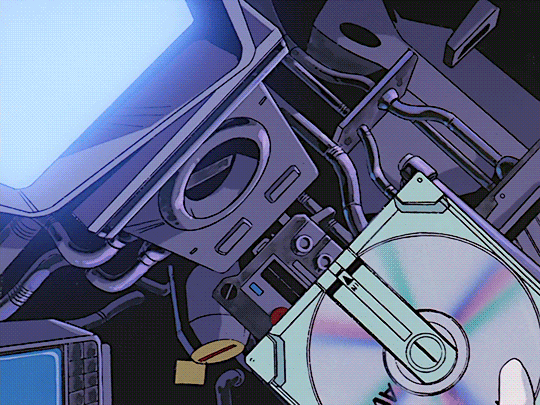
(Wanderer Not Mention Patlabor Speed Run [IMPOSSIBLE])
One of the issues with the term "real robots" is the fact that the realism in most "real robot" shows does not necessarily come from the robots themselves. Take blog favorite Patlabor, for example. Part of what makes the Labors as realistic as they are is not necessarily due to the imagined mechanics behind these machines. It's how the existence of these giant machines changes the lives of the characters. It's little things like how having a special police division that's devoted to Labor crimes is a bit of a money pit, or how SV2 has constant insurance problems due to the fact that Division 2, even in their best moments, are just as destructive as the people they're supposed to stop.
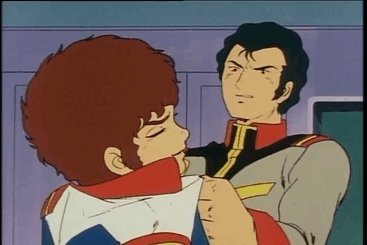
Or take the original "real robot" series, Mobile Suit Gundam. The realism does not lie in the design of the RX-78-2 Gundam. The realism comes from the One Year War and how it affects all of the characters. We can see this in how badly it affects the Gundam's pilot, Amuro Ray, as the poor sod of a teenager basically develops PTSD throughout the original show's run. And it's not just Amuro that's under a lot of stress. The infamous Bright Slap happens not only because Amuro refuses to get back into the Gundam, but because White Base captain Bright Noa (who's 19, by the way) is also at his wit's end. Never mind the fact that the slap makes everything worse.
So What Does This Have To Do With G Gundam?
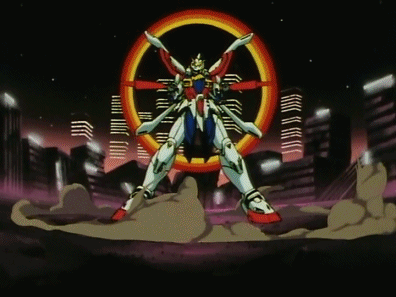
Everything. There's this idea that being a "real robot" series is what gives Gundam its bite and that G Gundam spits in the face of Gundam's original vision by being a hot-blooded "super robot" anime. There's just a couple of problems with that line of thinking. First, it's insulting to the series to say that it has nothing worthwhile to say. Y'know, G Gundam. The series that opens with the Gundam Fight (the Future Century replacement for traditional war) making its way to a ruined Rome, where the poor people who could not afford to leave for the space colonies are panicking as the Gundams literally crash onto their homes. The series where some of the last dialogue of the series is how, even after defeating the imminent threat that was the Devil Gundam, there is still work to be done when it comes to fixing the world, namely by finding a more sustainable replacement to the Gundam Fight. This doesn't even touch on the fact that all of the nations of the world join forces to face an threat that could wipe out all of mankind.

Second, and the part that I think is more insidious, is the idea that G Gundam is a lesser series because it went for more of a classic robot anime vibe as opposed to the serious war story that Gundam is known for. I say this is insidious because it not only ignores the fact that Gundam had just come off of the heels of the extremely depressing Victory Gundam and needed a bit of a palette cleanser, but it also implies that only so-called real robot stories can have serious storylines. God forbid something like Space Runaway Ideon exist, which is probably one of the most serious classic, pre-Dougram robot series out there, or Combat Mecha Xabungle, which is a really goofy but technically a "real robot" series.

This is also related to the idea that G Gundam is just "dumb fun." This line of thinking I can understand, because let's not kid ourselves here. While I wouldn't call this series dumb, G Gundam is kind of known for being insane (but in a good way). What makes this take just as grating is when a similar series can get away with a similar style of story just because it's not related to an existing franchise like Gundam. A series like, oh I don't know, Tengen Toppa Gurren Lagann. And that's a series that's often treated as somehow being different from most other mecha shows because "it's about the characters." Gurren Lagann is one of those shows, and people often treat it like it's a literary masterpiece while G Gundam, which I'd argue is one of the former's progenitor series alongside Getter Robo and GaoGaiGar, is treated as B-movie schlock. It's not, and I hope you'll join me when I dive into the insane masterpiece that is Mobile Fighter G Gundam.
#anime and manga#mobile fighter g gundam#tetsujin 28#mazinger z#mobile suit gundam#fang of the sun dougram#armored trooper votoms#patlabor#space runaway ideon#combat mecha xabungle#tengen toppa gurren lagann#real robot#super robot
26 notes
·
View notes
Photo
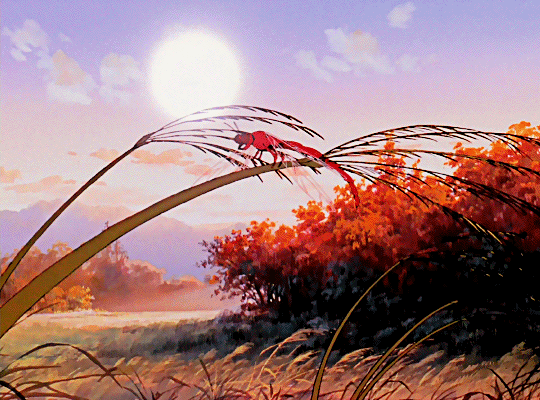
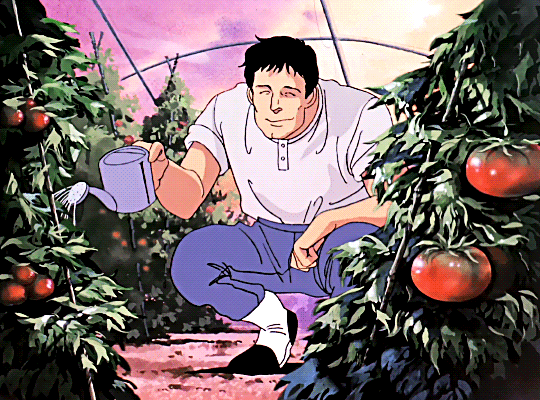

Sunset
+
Patlabor on TV (1989)
#patlabor#patlabor on television#patlabor on tv#kidou keisatsu patlabor#yamazaki hiromi#whales#my gifs#finally finished this woo
90 notes
·
View notes